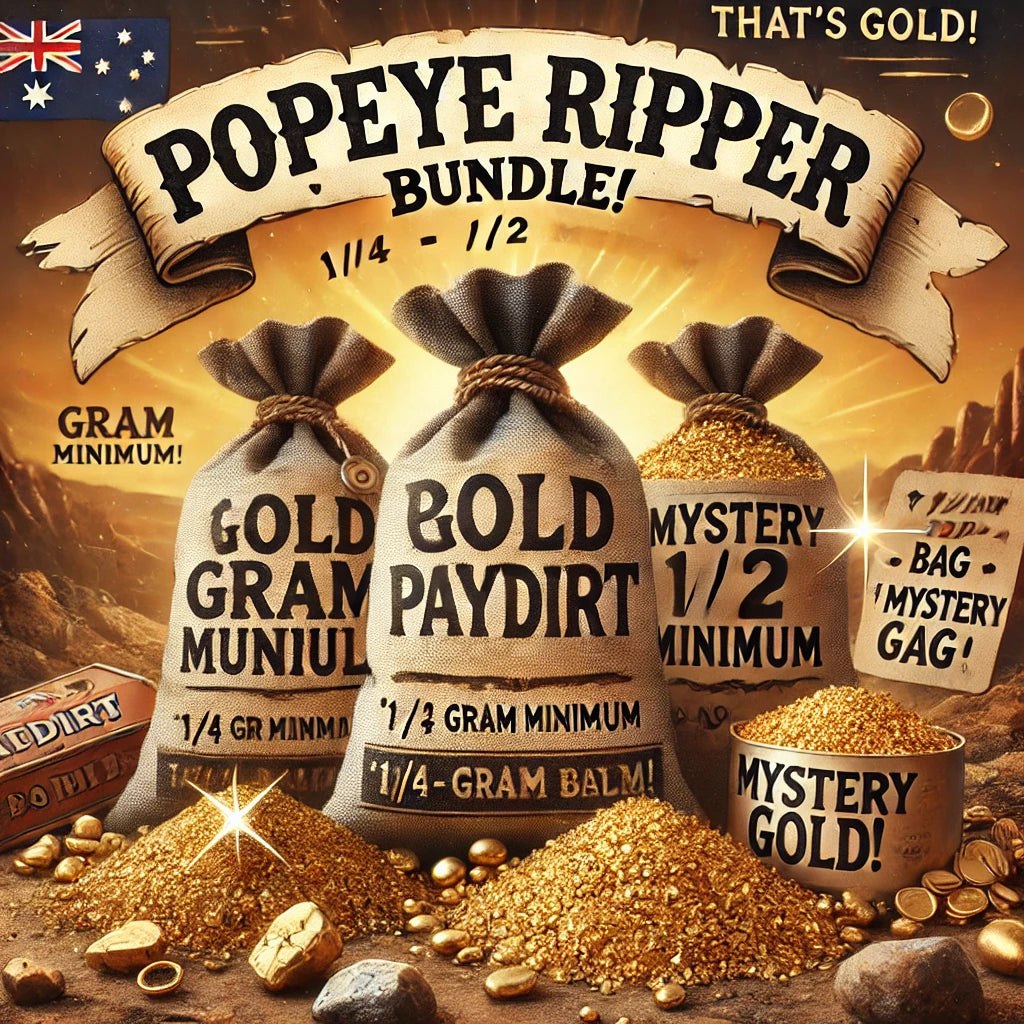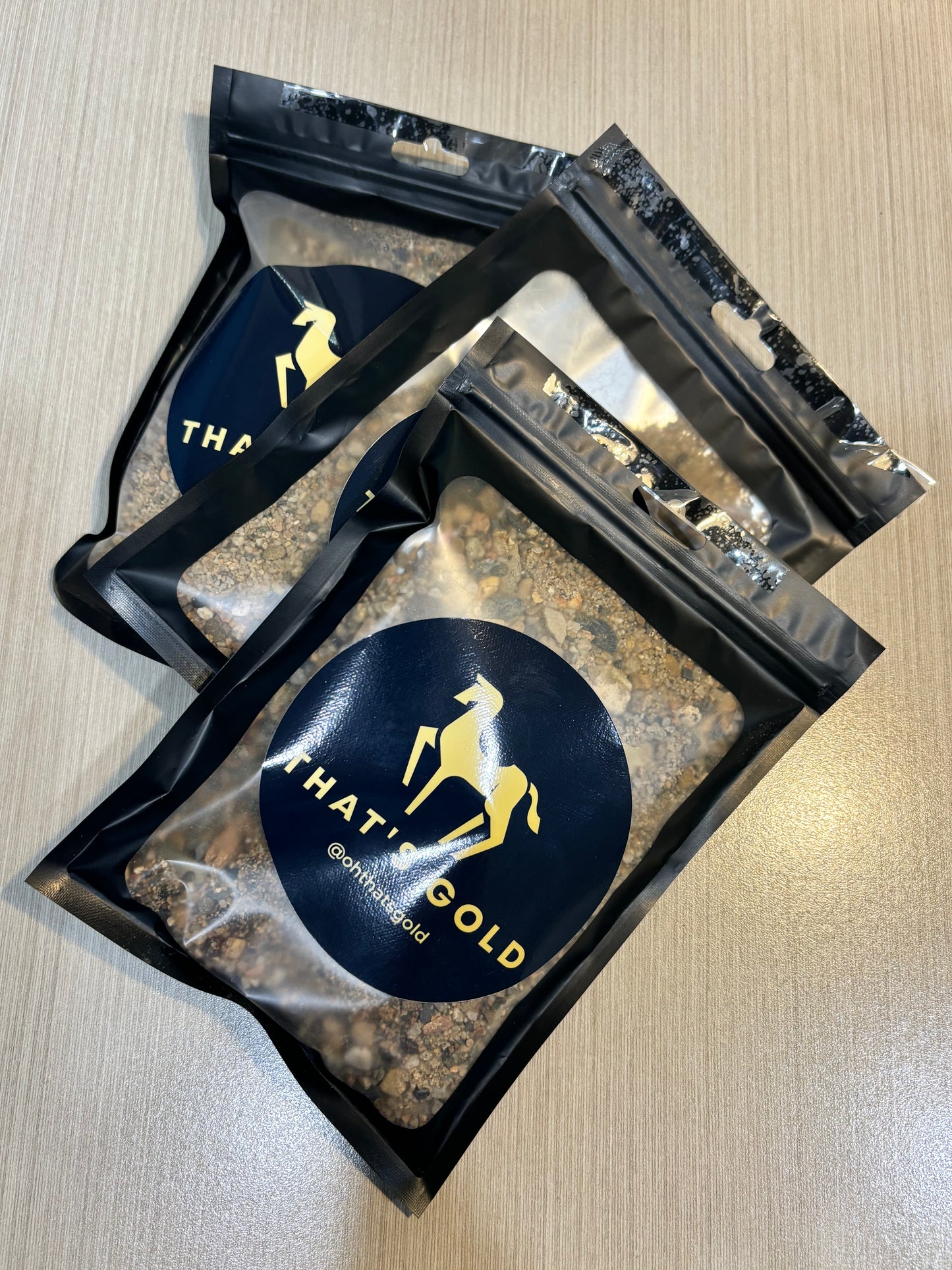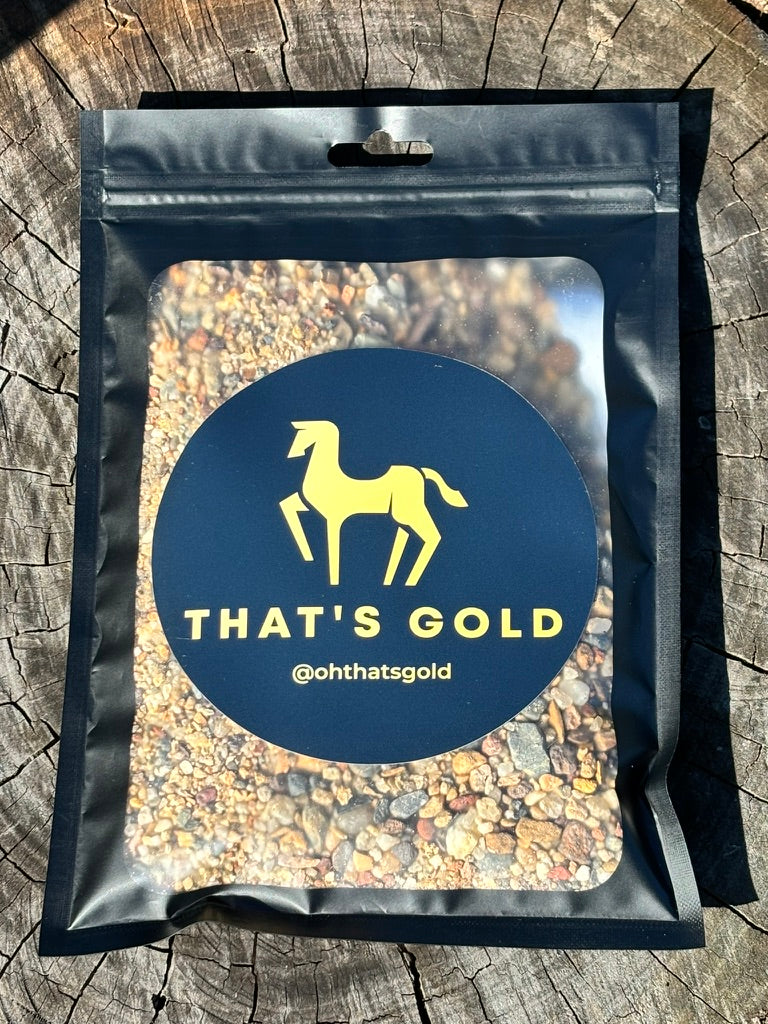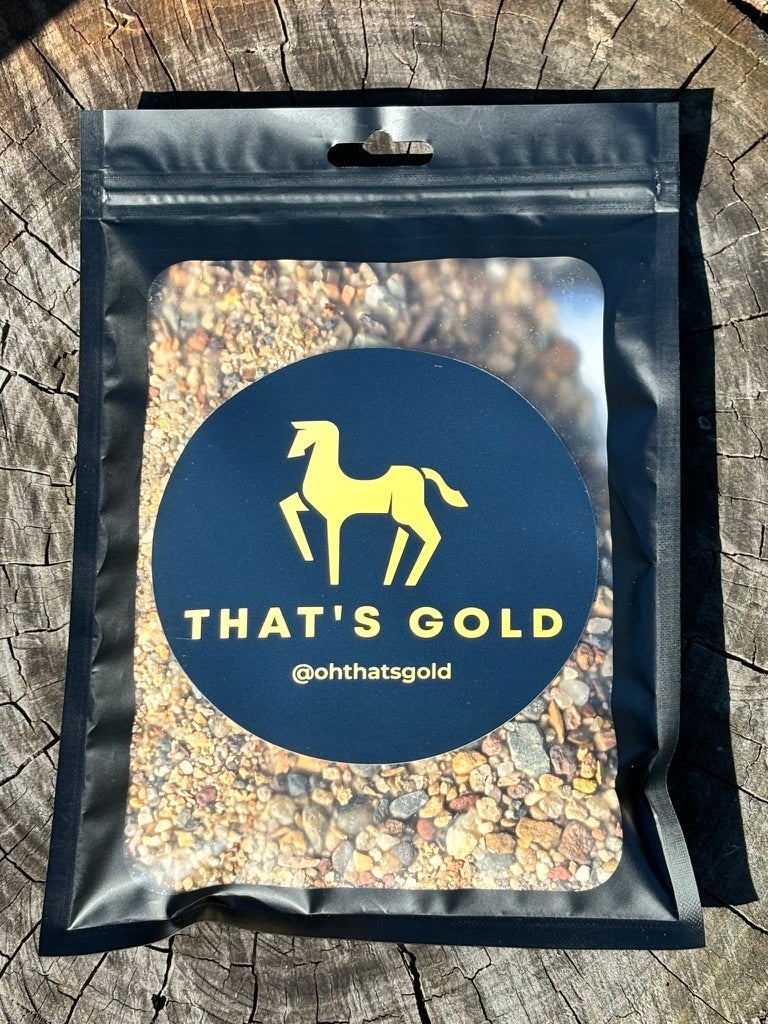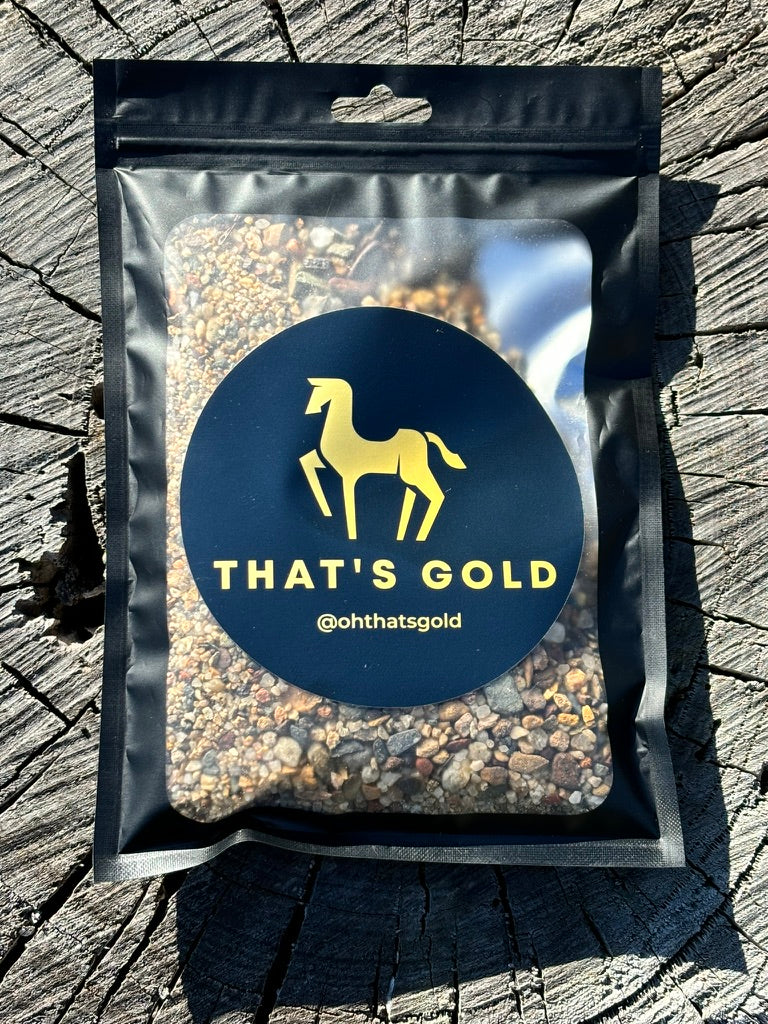Australia's goldfields have a rich history that continues to captivate tourists and adventure seekers. Many visitors wonder if they can try their luck at finding gold during their travels Down Under. Tourists can indeed dig for gold in Australia, but they need to follow specific rules and regulations.

Gold panning and fossicking are popular activities in certain areas of Australia. These activities let tourists experience a bit of the gold rush excitement that drew many people to the country in the 1800s. Some regions even offer guided tours and lessons for those new to gold prospecting.
Before grabbing a pan and heading to the nearest creek, it's important to know the local laws. Each state has its own rules about where and how tourists can search for gold. Some places require permits, while others have designated areas for fossicking. It's best to check with local authorities or visitor centres for up-to-date information.
Key Takeaways
- Tourists can dig for gold in Australia with proper permits and in designated areas
- Gold panning and fossicking are popular activities that offer a taste of gold rush history
- Local laws and regulations vary by state, so it's crucial to check before prospecting
Overview of Gold Discovery in Australia

Gold discovery in Australia sparked a transformative period in the nation's history. It drew thousands of hopeful prospectors and shaped the country's economic and social landscape.
The Gold Rush and Its Historical Significance
Gold was first found in payable amounts in Australia in 1851 near Bathurst, New South Wales. This sparked a massive gold rush that changed the face of the country. Thousands of people flocked to the goldfields, hoping to strike it rich. The population boomed, with many immigrants arriving from Europe and China. This influx of people led to rapid economic growth and development. Towns sprang up almost overnight in gold-rich areas. The gold rush also played a big role in shaping Australia's national identity and democratic values.
Major Goldfields and Regions
Australia's gold rush spread across several states, with major goldfields emerging in Victoria, Western Australia, and Queensland. Victoria was home to some of the richest goldfields, including Ballarat and Bendigo. These areas still have active gold mining today. In Western Australia, the Eastern Goldfields region became famous. The towns of Kalgoorlie and Coolgardie were at the heart of this gold-rich area. Queensland saw gold discoveries in places like Charters Towers and Gympie. The Golden Quest Discovery Trail in WA takes visitors through historic gold rush sites. Many old gold towns, such as Castlemaine and Maldon in Victoria, are now popular tourist spots.
Current Gold Prospecting Opportunities

Australia offers many chances for tourists to try gold prospecting. Different states have their own rules and popular spots for finding gold. Visitors can pan for gold or use metal detectors in certain areas.
Legal Considerations for Prospecting
To prospect for gold in Australia, you need a miner's right permit. This allows you to search on public land. Permits cost about $25-$50 per year, depending on the state. You must follow rules about digging depth and equipment use. Some areas are off-limits, like national parks or private property. Check local laws before you start.
Always fill in holes and take rubbish with you. Don't damage plants or disturb wildlife. In some places, you can only pan for gold in rivers. Other spots let you use metal detectors on dry land. Make sure you know what's allowed where you're going.
Prospecting in Western Australia
Western Australia is famous for its gold. The state had a big gold rush in the 1890s. Today, you can still find gold in many areas. Popular spots include Kalgoorlie, Coolgardie, and the Pilbara region.
You need a Miner's Right to prospect here. This costs $25 for a year. You can pan in creeks or use a metal detector on land. The best time to go is from April to October when it's cooler. Be careful in summer - it gets very hot.
Some tours let you try prospecting with experts. They show you how to use equipment and where to look. This can be a fun way to learn about gold hunting.
Prospecting in Victoria
Victoria is another top spot for gold prospecting. It's where the Australian gold rush started in the 1850s. The 'Golden Triangle' between Bendigo, Ballarat, and Stawell is still good for finding gold.
You need a Miner's Right here too. It costs $24.20 for two years. Popular areas include Ballarat, Rushworth, and Wedderburn. You can pan in streams or use detectors in designated areas.
Victoria has some great spots for beginners. There are fossicking areas set up just for tourists. These are safe and easy places to try gold panning. Some old mining towns also offer tours and demos.
Prospecting in Other States
Queensland, New South Wales, and South Australia also have gold prospecting opportunities. In Queensland, try the Palmer River or Clermont areas. New South Wales has spots near Bathurst and in the Northern Rivers region.
South Australia's goldfields are mostly in the Adelaide Hills and Flinders Ranges. Each state has different rules. Always check local laws before you start. Some places need special permits on top of a Miner's Right.
Tasmania and the Northern Territory have less gold but still some chances to prospect. In all states, joining a local prospecting club can be helpful. They know the best spots and can teach you tricks.
Methods and Techniques

Gold seekers in Australia use several ways to search for the precious metal. These methods range from simple panning to more high-tech detecting gear. Each technique has its own benefits and challenges.
Gold Panning and Sluicing
Gold panning is a classic method for finding gold in rivers and streams. It's simple and cheap to start. Prospectors use a shallow pan to scoop up gravel and sand from waterways.
They swirl the pan to wash away lighter materials, leaving heavier gold behind. Sluicing is a step up from panning. It uses a long, narrow box with riffles to catch gold as water flows through.
This method can process more material than panning alone. Both techniques work best in areas with known gold deposits. They're popular with tourists and hobbyists for their hands-on approach.
Metal Detecting for Gold
Metal detecting is a modern way to look for gold nuggets. It's effective in dry areas where panning isn't possible. Detectors can find gold pieces buried in soil or hidden under rocks.
Different types of detectors suit various terrains. Some are made just for gold hunting. Users need to learn how to read signals and dig carefully.
This method can be exciting, as you never know when you'll get a good signal. It's also less messy than wet methods. Metal detecting is allowed in many parts of Australia, but rules vary by state.
Understanding Alluvial Gold
Alluvial gold is found in riverbeds and old stream channels. It's been moved from its original source by water over time. This type of gold is often easier for tourists to find.
Alluvial deposits can be rich, especially in areas with a gold mining history. The gold in these deposits is usually small flakes or nuggets. It's often mixed with sand and gravel.
Knowing where to look is key. Old river bends and areas where water slows down are good spots. Learning about local geology can help find promising sites. Tourists should check local rules before searching for alluvial gold.
Prospecting Equipment and Preparation

Before heading out to prospect for gold in Australia, you'll need the right gear and safety knowledge. Proper equipment and preparation are key to a successful and safe prospecting trip.
Essential Gear for Prospecting
A gold pan is a must-have for any prospector. It's cheap, portable, and great for testing areas. Metal detectors are popular for finding larger nuggets. Choose a model designed for gold prospecting. A shovel and pick are crucial for digging. Pack a classifier sieve to sort material quickly. Bring multiple buckets for carrying dirt and water. A snuffer bottle helps collect fine gold particles. Don't forget a magnifying glass to inspect your finds. Wear sturdy boots and gloves to protect your feet and hands. Bring plenty of water, snacks, and sun protection. A first-aid kit is vital in remote areas.
Safety Measures and Best Practices
Always tell someone where you're going and when you'll return. Check the weather forecast and be prepared for changes. Bring a map, compass, and GPS device. Know how to use them. Stay alert for snakes and other wildlife. Wear a wide-brimmed hat, long sleeves, and trousers to avoid sunburn. Apply sunscreen regularly. Drink lots of water to prevent dehydration. Take frequent breaks in the shade. Be careful when using tools to avoid injury. Respect the land and follow all local laws and regulations. Fill in any holes you dig. Don't disturb vegetation or wildlife habitats. Keep noise to a minimum to avoid disturbing others.
Noteworthy Prospecting Locations

Australia has several famous gold prospecting spots that draw tourists and amateur miners. These sites offer a mix of history and hands-on gold panning experiences.
Kalgoorlie's Super Pit
The Super Pit in Kalgoorlie, Western Australia is a massive open-cut gold mine. It stretches 3.5 km long and 1.5 km wide. Visitors can view the enormous pit from a public lookout.
The Hannans North Tourist Mine nearby lets people try gold panning. Tourists can learn about modern and historical mining methods. They can also see huge mining trucks up close.
The Super Pit produces over 800,000 ounces of gold yearly. It's one of Australia's largest gold mines.
Golden Triangle Hotspots
Victoria's Golden Triangle boasts rich goldfields. Key towns include Ballarat, Bendigo, and Castlemaine. These areas were central to Australia's 1850s gold rush.
Tourists can pan for gold in rivers and creeks. Popular spots are the Loddon River near Castlemaine and Bendigo Creek. Maldon, a well-preserved gold rush town, offers guided prospecting tours.
Bendigo's Central Deborah Gold Mine takes visitors 61 metres underground. They can see real gold veins and try their luck at panning.
Historic Towns of Coolgardie and Gwalia
Coolgardie and Gwalia in Western Australia offer glimpses into gold rush history. Coolgardie was once the state's third largest town. Now it's a small but fascinating historical site.
Gwalia is a ghost town near Leonora. Tourists can explore the abandoned miners' cottages and headframes. The restored Gwalia Museum showcases the town's gold mining past.
Both towns let visitors try gold detecting in designated areas. They need to get a Miner's Right permit first. This costs about $25 and is valid for a year.
Cultural and Heritage Considerations

Gold mining has shaped Australia's history and landscape. Tourists must be mindful of cultural sensitivities and heritage sites when looking for gold.
Respecting Aboriginal Lands and Heritage Sites
In Western Australia and Victoria, many gold-rich areas overlap with Aboriginal lands. Tourists need permits to enter some sites. It's crucial to avoid disturbing sacred places or artefacts.
Some old gold mining towns are now heritage sites. These places tell stories of the gold rush era. Visitors can learn about early settlers and their impact on Aboriginal communities.
Tourists should stick to designated areas for gold panning. This helps protect important cultural and historical sites. It's best to join guided tours or visit museums to learn about Aboriginal culture and gold mining history.
Remember, taking objects from heritage sites is illegal. Always check local rules before searching for gold. Responsible tourism helps preserve Australia's rich cultural heritage for future generations.
Frequently Asked Questions

Gold prospecting in Australia attracts many tourists. There are important rules and considerations to keep in mind. Here are answers to common questions about gold hunting Down Under.
What are the costs associated with obtaining a gold prospecting licence in Australia?
Licence fees vary by state. In Victoria, a Miner's Right costs about $25 for 10 years. New South Wales charges around $30 for a 1-year recreational fossicking licence. Other states have similar affordable rates for casual prospectors.
What regions in Australia are most renowned for gold finding prospects?
The Victorian Goldfields region is famous for gold discoveries. The Kalgoorlie area in Western Australia is also well-known. Parts of Queensland and New South Wales have good prospects too. Local visitor centres can suggest promising spots to search.
Is it possible to sustain oneself through gold prospecting in Australia?
Making a living solely from recreational gold prospecting is very difficult. Most people treat it as a hobby. Commercial mining operations extract most easily accessible gold. Finding enough gold to earn a steady income requires lots of skill and luck.
Are there designated seasons for gold mining activities in Australia?
Gold prospecting happens year-round in Australia. The dry season from April to October is popular in northern areas. Southern regions see more activity in warmer months. Some spots close during fire danger periods or after heavy rain.
What are the regulations for international visitors interested in gold prospecting in Australia?
Overseas visitors can get licences to prospect recreationally. They must follow the same rules as Australians. This includes respecting private property and protected areas. Visitors should check visa conditions about engaging in activities like prospecting.
Do individuals require a permit to prospect for gold in Australia?
Yes, a permit or licence is needed to prospect for gold legally in Australia. Each state has its own system. Casual fossicking licences are cheap and easy to get. More involved prospecting may need extra permits.

